Frequently Asked Questions
What is AC Ionization
AC Ionization is also known as Corona Ionization. AC stands for alternating current, which means that the power cycles from positive to negative sixty times per second. The AC Ionizer therefore produces both positive and negative ions from the same points or emitters. Applying alternating current energy (AC) at 50/60 Hz onto a single emitter or row of emitter pins in proximity to a ground reference will create ionization at the emitter tips and in the air space between the emitters and ground. The high voltage attacks the air and because the current is alternating between positive and negative, both positive negative ions will be created. AC ionization is used in blowers, guns, nozzles and linear static devices.
What is Steady State DC Ionazation?
Like the Pulsed DC Systems, Steady State also employs separate power supplies and emitter, but instead of alternating positive and negative, both power supplies are on all the time. There is some degree of recombination of ions, but the ion density is greater because of the continuous production of bi-polar ions.
What is Pulsed DC Ionization
Pulsed DC ionizers utilize separate power supplies to generate positive and negative voltages and has its own dedicated emitters. The power supply alternates between positive and negative, but usually at a lower frequency than AC units. In this way, ion recombination is reduced and performance in many instances is increased. Pulsed DC ionizers have the ability to work at greater distances without the use of air flow, which improves operator comfort without compromising performance. This technology is also applied in ionizing blowers, ionizing bars, and blow-off gun devices. In addition, it has wide application for controlling static charge in room systems, on work surfaces and flow hoods, and in equipment at the point of use.
How is Static Electricity Created
Toggle ContentStatic charge is created whenever two surfaces contact and separate, and at least one of the surfaces has a high resistance to electrical current (and is therefore an electrical insulator. The effects of static electricity are familiar to most people because people can feel, hear, and even see the spark as the excess charge is neutralized when brought close to a large electrical conductor (for example, a path to ground), or a region with an excess charge of the opposite polarity (positive or negative). See Wikipedia for more details.
What are Air Ions?
Air is a mixture of nitrogen, oxygen, carbon dioxide, water vapor, and other trace gases. One or more gas that gives up or loses electrons is called an air ion. Very simply an ion is an atom or molecule that has gain or lost an electron. Both positive and negative electrons exist in air. Positive air ions are generally molecules of carbon dioxide that have lost an electron, whereas a negative air ion is a molecule of oxygen that has gained an electron.
What are Conductors
Materials or substances which have the ability to carry charge from one place to another are called conductors. Silver is one of the best conductors, but others include aluminum, copper, iron, coal (carbon impregnated materials) and some liquids.
What are Insulators
An electrical insulator is a material whose internal electric charges; do not flow freely, and therefore make it very hard to conduct an electric current; under the influence of an electric field. A perfect insulator does not exist, but some materials such as glass, paper and Teflon; which have high resistivity, and most plastics are good examples of insulators.. Such materials can serve as practical and safe insulators for low to moderate voltages (hundreds, or even thousands, of volts).


